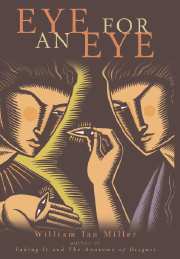Book contents
- Frontmatter
- Contents
- Preface: A Theory of Justice?
- 1 Introductory Themes: Images of Evenness
- 2 The Talion
- 3 The Talionic Mint: Funny Money
- 4 The Proper Price of Property in an Eye
- 5 Teaching a Lesson: Pain and Poetic Justice
- 6 A Pound of Flesh
- 7 Remember Me: Mnemonics, Debts (of Blood), and the Making of the Person
- 8 Dismemberment and Price Lists
- 9 Of Hands, Hospitality, Personal Space, and Holiness
- 10 Satisfaction Not Guaranteed
- 11 Comparing Values and the Ranking Game
- 12 Filthy Lucre and Holy Dollars
- Conclusion
- Notes
- Works Cited
- Index
- References
Works Cited
Published online by Cambridge University Press: 18 December 2009
- Frontmatter
- Contents
- Preface: A Theory of Justice?
- 1 Introductory Themes: Images of Evenness
- 2 The Talion
- 3 The Talionic Mint: Funny Money
- 4 The Proper Price of Property in an Eye
- 5 Teaching a Lesson: Pain and Poetic Justice
- 6 A Pound of Flesh
- 7 Remember Me: Mnemonics, Debts (of Blood), and the Making of the Person
- 8 Dismemberment and Price Lists
- 9 Of Hands, Hospitality, Personal Space, and Holiness
- 10 Satisfaction Not Guaranteed
- 11 Comparing Values and the Ranking Game
- 12 Filthy Lucre and Holy Dollars
- Conclusion
- Notes
- Works Cited
- Index
- References
- Type
- Chapter
- Information
- Eye for an Eye , pp. 243 - 258Publisher: Cambridge University PressPrint publication year: 2005



